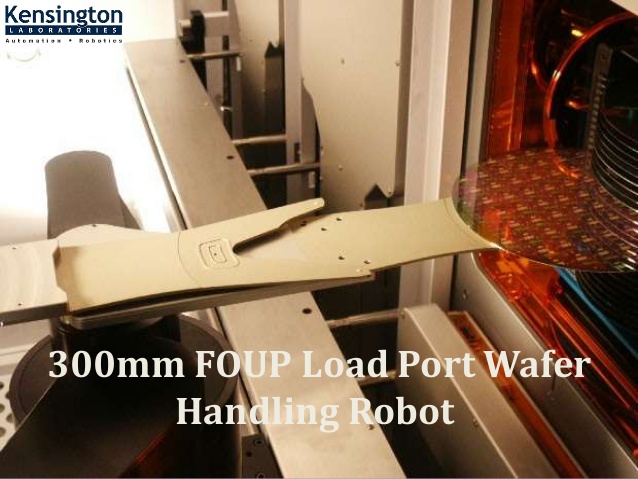Optimizing AMAT Robot Performance: A Guide to Precision Motion Control Techniques
Precision is critical for success in the highly competitive and challenging sector of semiconductor production. Applied Materials (AMAT) robots are a hallmark of this industry, noted for their dependability and ability to handle delicate wafers with pinpoint precision. Even the best robotic systems might benefit from tuning to guarantee they continue to function at optimal levels.
This article looks into crucial precision motion control techniques for maximizing the capabilities of your AMAT robot.
Understanding Precision Motion Control
Precision motion control lies at the heart of manufacturing processes that demand accuracy and repeatability - nowhere more so than in semiconductor production where AMAT robots excel. This form of motion control goes beyond simple movement. Here's what it entails:
Accuracy: The ability of the robot to reach the exact intended position within tight tolerances, often measured in microns.
Repeatability: The robot's capacity to consistently return to the same position across multiple cycles, ensuring predictable outcomes.
Smoothness: Controlled, fluid motions without sudden jerks or vibrations that can compromise delicate handling tasks.
Key Factors Influencing AMAT Robot Precision
Several elements can impact the precision of your AMAT robot. Here are some primary considerations:
Mechanical Rigidity:
A robot constructed with a structurally sturdy frame and components reduces the influence of vibrations and bending, resulting in more precise motions.
Backlash:
Any looseness or "play" in gears, belts, or other mechanical driving parts adds uncertainty and imprecision to the robot's location.
Control Loop Tuning:
The AMAT robot's feedback control system requires thorough calibration to guarantee that it responds promptly and precisely to any positional variation.
Trajectory Planning:
The paths the robot is programmed to follow play a role. Smooth, well-planned trajectories with minimized abrupt changes help maintain accuracy.
Sensor Quality:
High-resolution sensors, such as encoders, offer more detailed data to the control system, allowing for finer changes and improved overall accuracy.
Techniques for Optimization
When it comes to AMAT robots in the semiconductor industry, precision isn't just desirable – it's essential. Let's explore some key techniques to optimize the precision motion control of your AMAT robot for peak performance:
Calibration and Maintenance:
Regular calibration ensures the robot's internal understanding of its movement matches reality. Preventative maintenance minimizes the wear and tear that leads to inaccuracy.
Advanced Control Algorithms:
Implementing sophisticated control algorithms (like PID with feedforward) allows for more refined error correction and smoother motion profiles.
Vibration Mitigation:
Isolating sources of vibration in the AMAT robot's environment and using dampening techniques can significantly reduce disturbances that affect precision.
Trajectory Optimization:
Software tools can help design paths for the robot that prioritize smooth, controlled motions, minimizing positional errors.
High-resolution Feedback:
Integrating high-resolution encoders provides the controller with more granular positional data, enabling even finer adjustments.
By actively employing these techniques, you can significantly boost the precision and performance of your AMAT robot, leading to benefits like increased throughput and reduced defect rates.
Real-World Benefits of Precision Optimization
Investing time and resources in improving the precise motion control of your AMAT robot pays off well in the demanding world of semiconductor fabrication. Here are some of the primary benefits:
Increased Throughput:
Precise, efficient movements save time spent making adjustments or waiting for the robot to settle into place. This instantly increases your production output.
Reduced Defect Rates:
When an AMAT robot has high precision, the danger of mishandling or injuring delicate wafers is greatly decreased, resulting in less costly scrap and rework.
Extended Equipment Lifespan:
A perfectly tuned robot has less strain and wear on its components. This results into a longer service life and less downtime for maintenance.
Competitive Advantage:
Optimizing your AMAT robot's precision motion control provides you an advantage in the competitive semiconductor industry, helping you to create higher-quality goods with more efficiency.
Closing Thoughts
Precision motion control is not a one-time fix; it's a continuous process. By following the techniques outlined and addressing potential sources of inaccuracy, you ensure that your AMAT robot consistently operates with the precision and efficiency essential for success in semiconductor manufacturing.
Remember, an optimized AMAT robot offers benefits throughout the production process. Increased throughput, reduction in defects, extended equipment lifespan, and a competitive edge are all achievable through focused attention to precision motion control.
.jpg)


Comments
Post a Comment